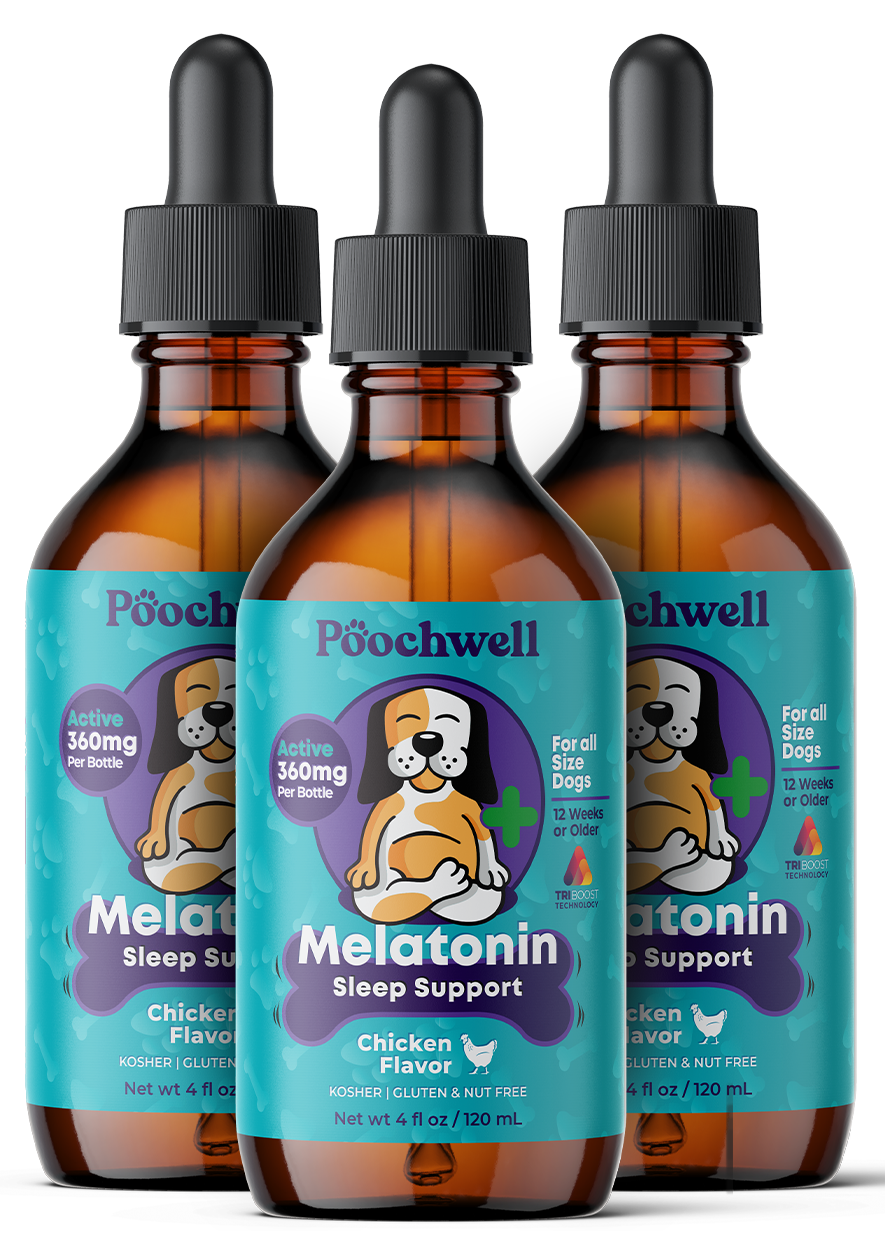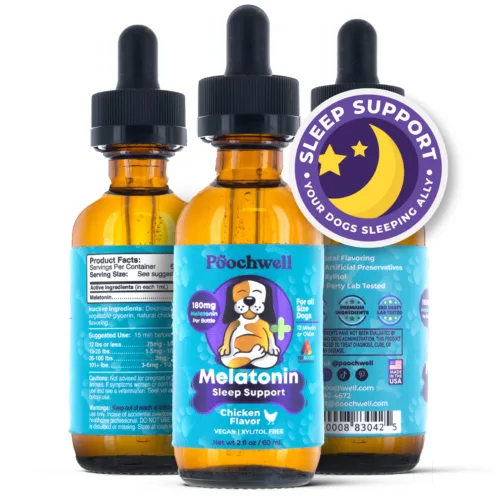Comparing Natural and Synthetic Melatonin for Dogs
The use of melatonin for dogs, particularly for managing sleep disorders and anxiety, has become increasingly popular.
In choosing a melatonin supplement for dogs, it’s important to understand the differences between natural and synthetic forms. This article aims to explore these differences, including the advantages and considerations of each type.
By providing this information, dog owners can make more informed decisions about which type of melatonin might be best for their pets, ensuring effective and safe use.
Natural vs. Synthetic Melatonin: What’s the Difference?
| Aspect | Synthetic Melatonin | Natural Melatonin |
|---|---|---|
| Purity | High; produced in controlled environments | Can vary; may contain impurities |
| Consistency | Uniform concentration and effects | Variable concentration and effects |
| Effectiveness | Predictable and consistent in action | Can be unpredictable due to variability |
| Safety | Generally considered safe with fewer allergens | Potential for allergens and contaminants |
| Manufacturing | Regulated, ensuring quality and consistency | Less regulated, leading to inconsistency |
| Preference | Favored for predictable treatment outcomes | Chosen for holistic or organic approaches |
| Availability | Widely available in standardized dosages | May be less commonly available |
Natural melatonin, sourced from plants or animals, is considered more organic but may vary in concentration and purity.
In contrast, synthetic melatonin is produced in controlled environments, ensuring consistent strength and typically being free from biological contaminants.
This makes synthetic melatonin a more uniform and potentially safer option for use in supplements, including those for dogs.
Natural Melatonin: is extracted from animal pineal glands or certain plants. Animal-based extraction involves processing pineal glands, while plant-based melatonin is isolated from plant materials.
Although these natural sources offer an organic alternative, their inconsistent concentrations and potential impurities make them less common in dog supplements compared to synthetic melatonin, which is more consistent and pure.
Synthetic Melatonin: is chemically created in a laboratory setting, ensuring high purity and consistency. The process involves the synthesis of melatonin from various safe chemical precursors like acetylated and methylated derivatives of serotonin.
This method allows for precise control over the concentration and purity of the end product, making synthetic melatonin a reliable and standardized option for supplements, including those used in veterinary medicine for dogs.
The controlled manufacturing process also ensures that synthetic melatonin is free from the impurities and variations often found in natural sources.
Efficacy and Absorption of Synthetic versus Natural Melatonin for Dogs:
The distinction between natural and synthetic melatonin in dogs is primarily how its made and consistency of the end product.
Synthetic melatonin is produced under controlled and calculated conditions, resulting in a uniform and predictable product, which is important when dosing.
This uniformity ensures consistent absorption and effectiveness in a dog, which is essential for managing health and sleep related issues effectively. Each dose of synthetic melatonin provides a reliable level of efficacy. While natural melatonin can vary in its concentration and purity.
This variability may lead to unpredictable effects in dogs, making it less consistent in addressing specific canine health concerns.
| Aspect | Synthetic Melatonin | Natural Melatonin |
|---|---|---|
| Efficacy | High efficacy due to controlled concentration and quality | Variable efficacy depending on source and concentration |
| Absorption | Predictable absorption rates, ensuring consistent effects | Absorption can vary, affecting reliability of effects |
Why Would Someone Use Natural Melatonin Over Synthetic?
Natural melatonin might be prescribed over synthetic in certain scenarios where a dog owner or veterinarian prefers a more organic approach or if the dog has shown a better response or tolerance to the natural form.
Some may opt for natural melatonin due to personal beliefs in holistic or natural treatments.
However, it’s important to note that the choice between natural and synthetic melatonin should be based on the dog’s individual health needs, effectiveness of the treatment, and under the guidance of a veterinarian.
Safety Considerations for Dogs
Purity and Allergens
With synthetic melatonin, the risk of allergens or impurities is significantly reduced, which makes it a safer choice for dogs with allergies or sensitivities.
Natural melatonin, while appealing for its organic nature, may carry more risks of contamination and accuracy of dosing.
Regulation and Consistency
Synthetic melatonin is subject to stringent manufacturing regulations, ensuring each batch’s quality and consistency and the clear of any impurities.
This level of regulation is often not available for natural melatonin, potentially leading to variability in product quality.
Choosing the Right Type of Melatonin for Your Dog
Veterinarian Recommendations
A veterinarian can best assess which type of melatonin is suitable for your dog, considering individual health factors. They can guide you on the appropriate form, considering your dog’s specific needs and any existing health conditions.
Conclusion
Selecting between natural and synthetic melatonin for dogs depends on various factors, including the dog’s health, the desired outcome, and potential sensitivities.
Consultation with a veterinarian is essential to make the best choice for your pet’s specific needs and to ensure their safety and well-being.

Check out our Vet Approved Melatonin for dogs.

